As my Columbia University journalism students prepare a mobile story for their midterm—due March 18—I devote part of today’s class to analyze and dissect two stories from The New York Times that are among the best additions for my catalog of excellence in creating linear stories where text and visual assets are combined to engage the reader through a rich weaving of the two.
The graduate course I teach is Multimedia Design & Storytelling and six weeks of the course are devoted to the way journalists create content with a mobile-first approach.
Story #1–“The Absurd Problem of New York City Trash”
The first story we are analyzing is all about the complexities of trash collection in New York City. Those of us who live here know only too well how bags of trash pile up on sidewalks, with rats roaming around and often crossing furiously close to our feet as we walk.
The New York Times has devoted a lengthy piece to the past, present and future of what it terms “the absurdity of trash” in the City.
I am using this story in class because it breaks away from what has already become a “traditional palette” for mobile storytelling—-headline followed by video, followed by text, followed by additional visual assets. Instead, this story opens with a photo essay. Readers dance into the story by looking at familiar images of how trash bags are seen. It is only after we have seen these photos that the actual story begins. If this was a musical composition, we are presented with drums and trombones before the violin section begins its work.
I will remind my young students that photo essays have been a mainstay story structure of visual journalism, especially as displayed on the pages of LIFE Magazine.
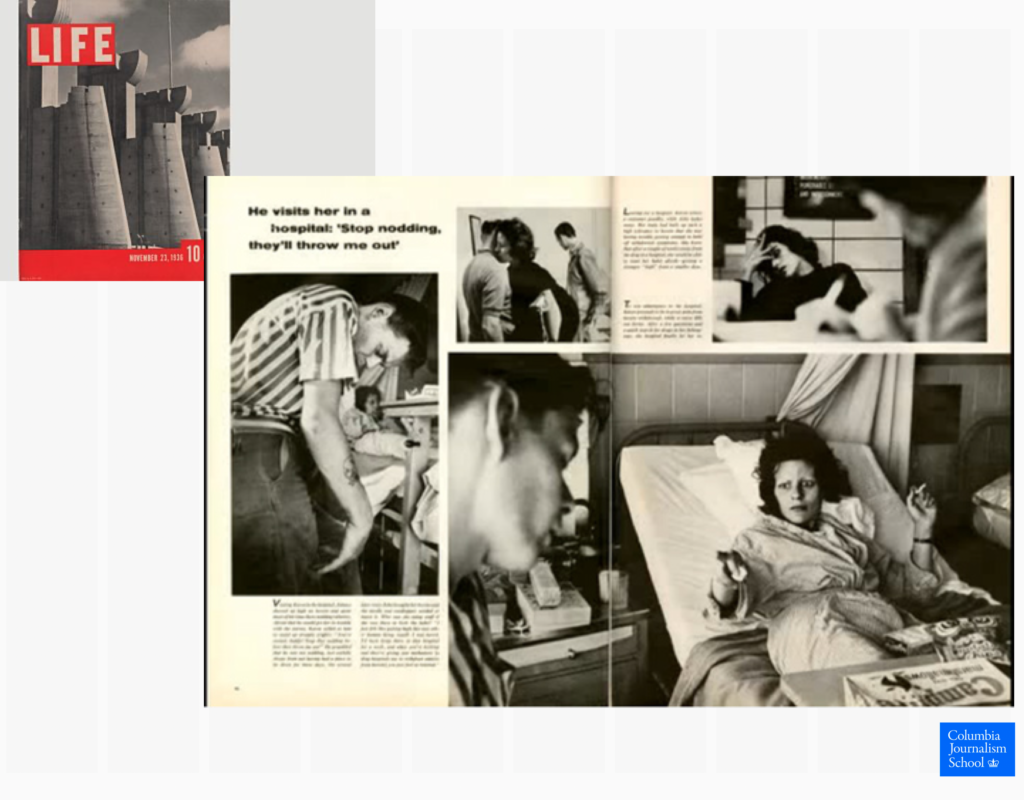
The Times starts with photos then breaks into the first of three segments which facilitate how we navigate the story. A good mobile story will be linear and will include segments. Remember, a phone rings and takes you away from your reading, so subheads and segments are a great way to help with internal navigation of a long piece.
Here is an outline of how I assume the writer and visual storyteller conceptualized the piece, with 40 visual assets utilized:
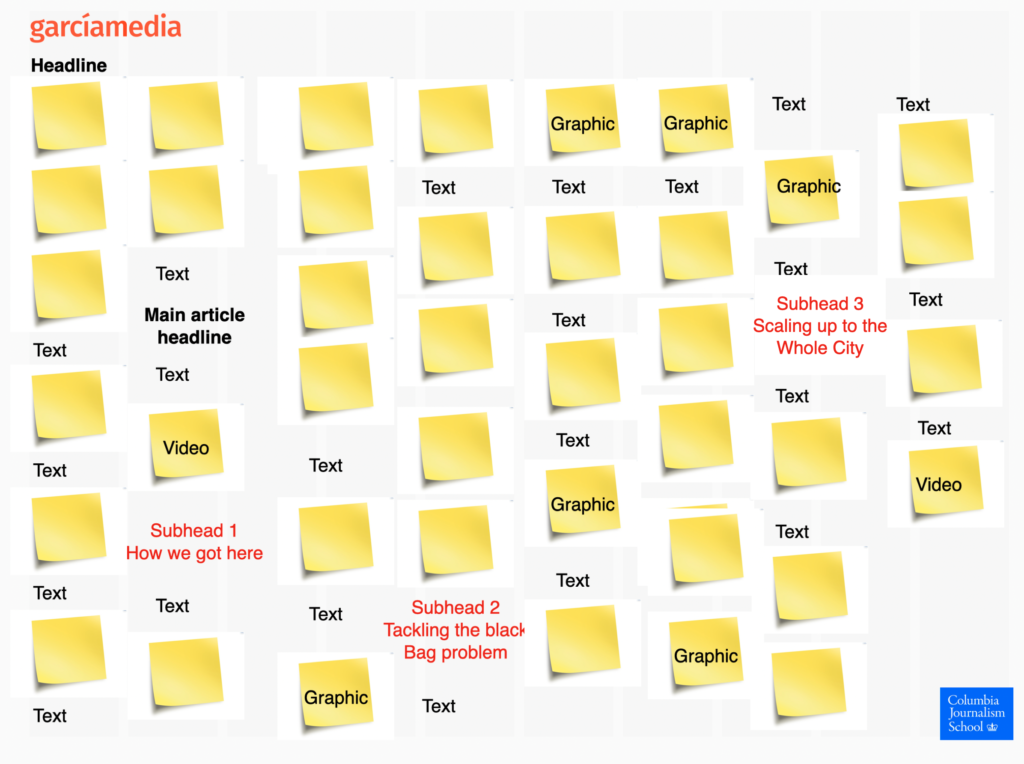
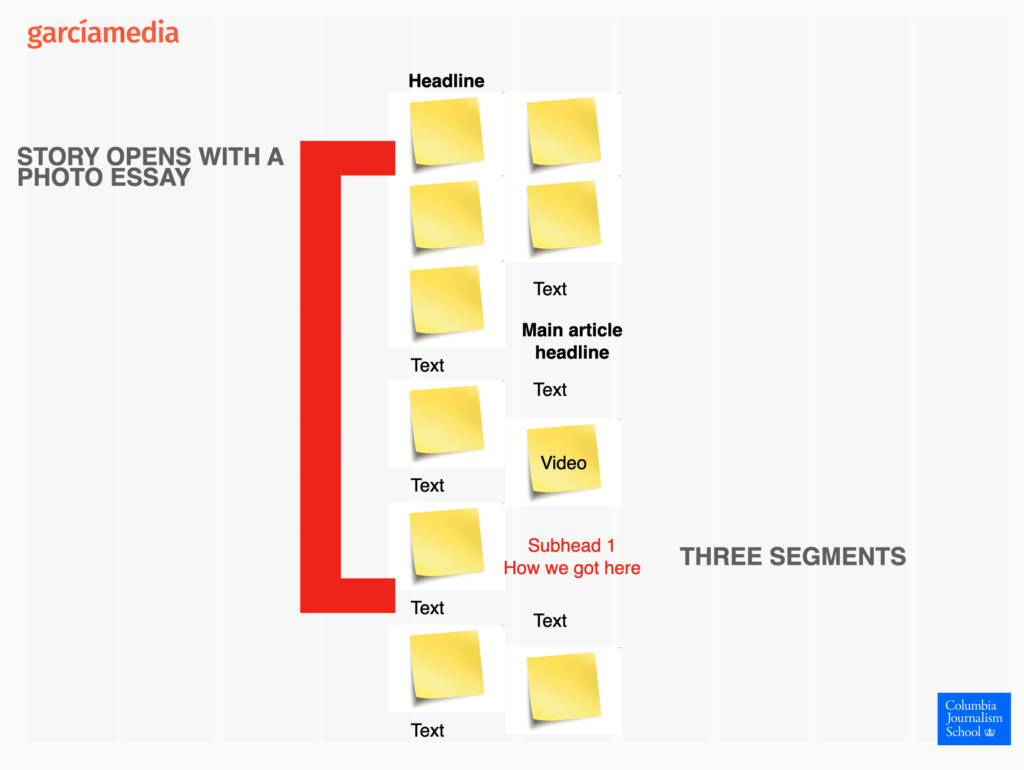
Starting with a photo essay offers the readers a visual presentation that I am sure helps to retain them as the writer leads into what would be the traditional start of the story. What a great, innovative way to start the story. That photo essay constitutes the equivalent of several paragraphs of a narrative.
By the time we get to the main headline of the story and its lead paragraph, we are already hooked. We wish to continue reading.
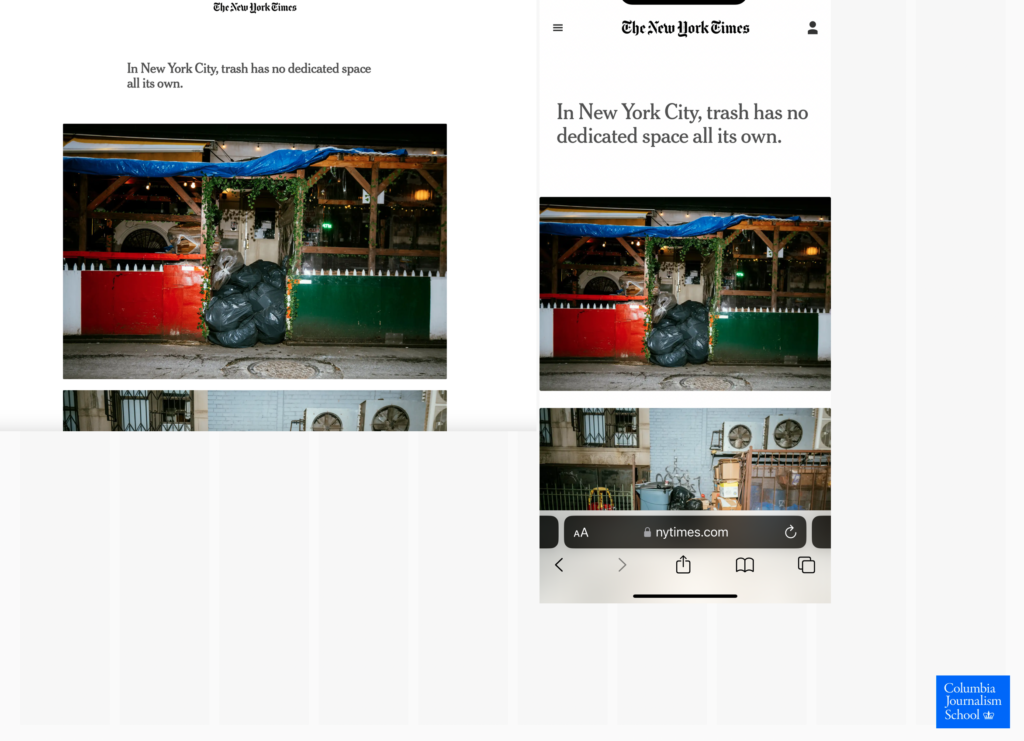
Story #2–“Inside the Massive Repair Shops Where Subway Cars Go for a Makeover”
What a fun, informative and visual this story is.
Again, The Times’ editors recognize the visual potential of this story, which shows us how those subway cars we ride daily get a makeover.
The story follows a more traditional pattern of narrative and visual assets coming together and is a must read example for anyone interested in linear-mobile storytelling. If there is an example of story that is composed as in a text chat between two friends this is it.
Take a look:

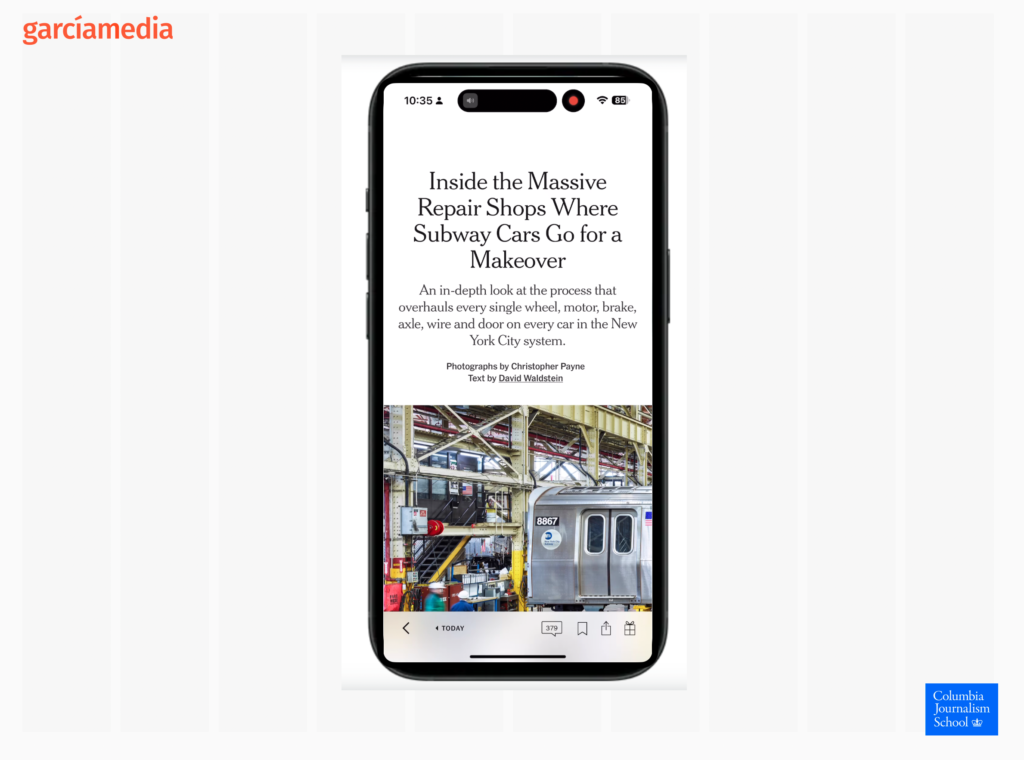
And, of course, I turned to my print edition of The Times to see how all those wonderful photos were handled and what a glorious display it is, as we see here, starting with a double page treatment for the first image:

Here we see print doing what it can do best: displaying images large, something we can’t do on the small canvas of the phone screen:

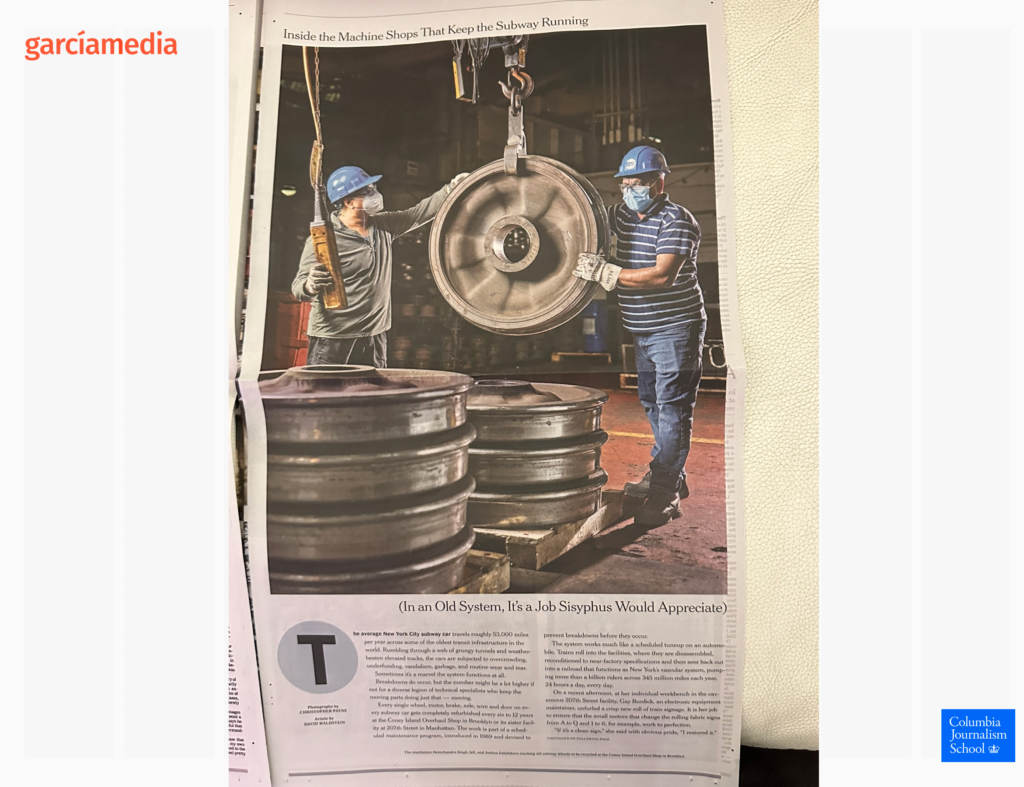
And, finally, we see one common visual language across all the platforms:
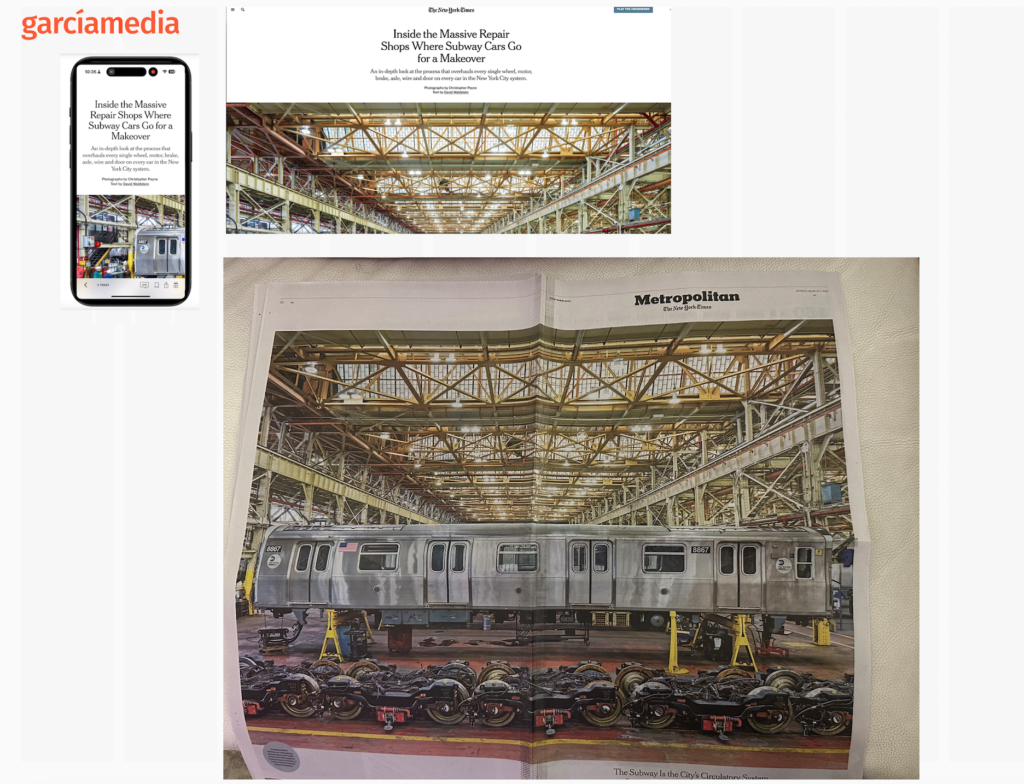
Of related interest
Our workshop deals with the two big revolutions facing editors
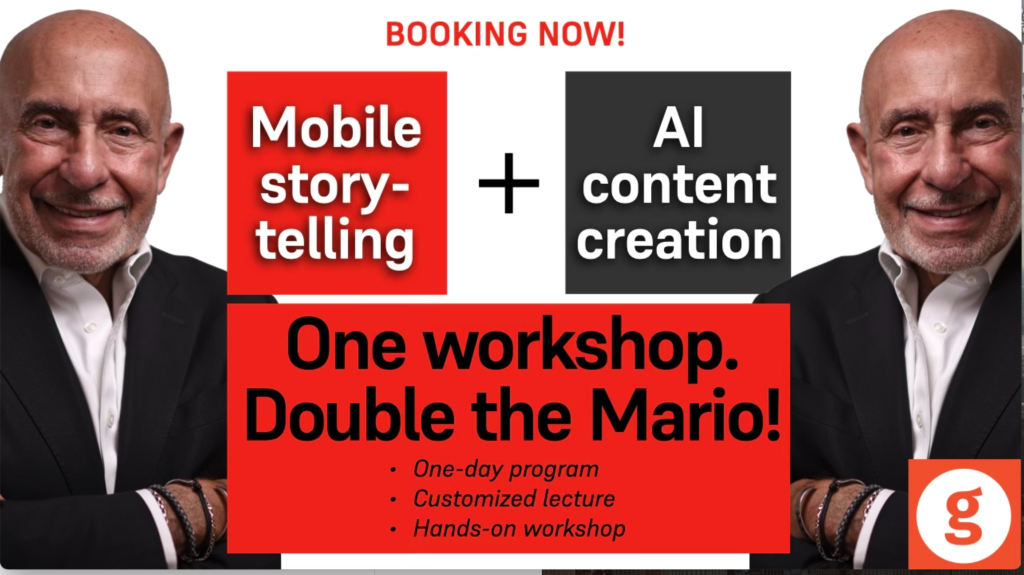
For me, it is imperative that editors approach content creation thinking in terms of mobile first.
Mobile first involves the type of transformation where all content is prepared thinking from small to large platform. Thinking small platform does not mean that the reporter conceptualizing a story for mobile consumption should not think BIG. So, plan from small to large, but think big in terms of the story content and the visual assets that go with it.
While mobile first is still elusive to so many newsrooms around the planet, here we are, in 2024, faced with an even bigger challenge not just knocking at our doors, but already IN: Artificial Intelligence.
Transformation and a change of mentality to face these challenges is the first step. Training and education to tackle them with a sense of focus and direction is essential.
That’s where our Garcia Media workshops come in
Our Garcia Media Mobile Storytelling workshops introduce your editorial team to the way we write, edit and design for mobile platforms. This one-day program includes a presentation and a hands-on workshop. We’ve added a new segment about AI for content creation.
For details, to customize, and to book: mario@garciamedia.com
Order my new book AI: The Next Revolution for Content Creation:
Join me on the road:
Appearances and conference
https://linktr.ee/themarioblog (https://linktr.ee/themarioblog)
Mario’s AI speaking engagements coming up
Here you see where I will be discussing AI at various events. Feel free to send me an email (mario@garciamedia.com) if you have questions about any of these events. You can always go directly to the organization’s website for additional information.
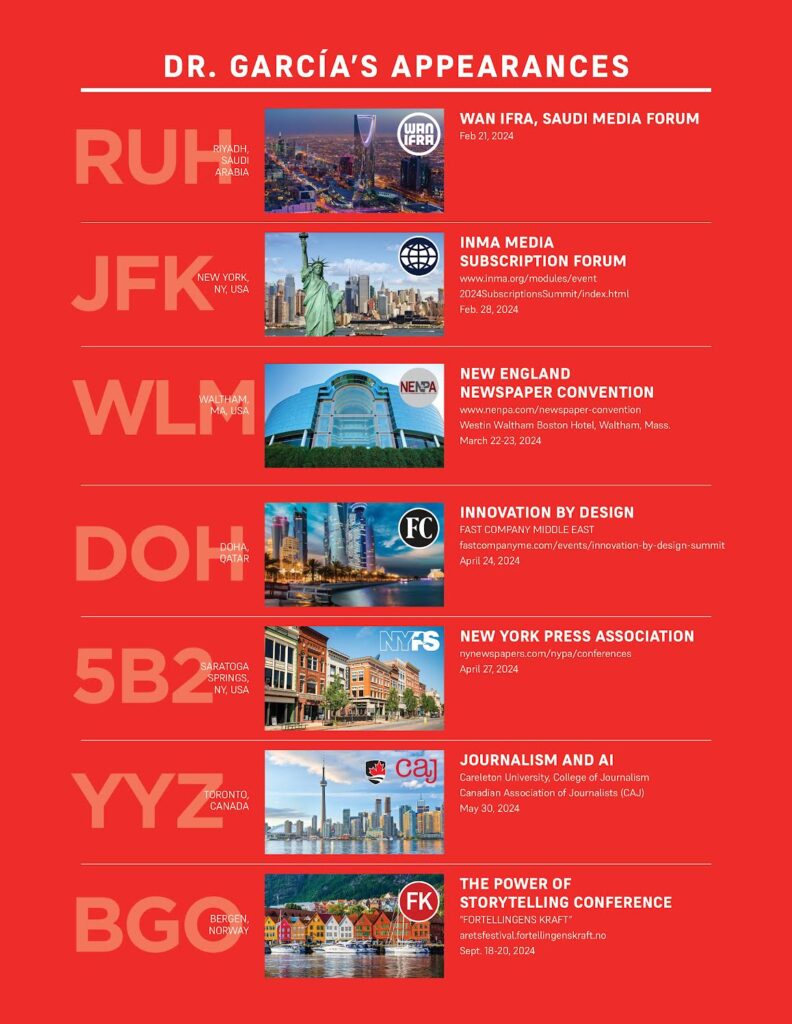
Hoping to see you along the way!
Artificial Creative Intelligence blogs of interest:
The following blog posts all deal with Artificial Intelligence and creativity:
Media predictions for 2024
Every year, Harvard University’s Nieman Lab publishes what selected media people predict for journalism in the following years. You can find my own prediction here;
https://www.niemanlab.org/2023/12/ai-takes-center-stage/
Start writing or type / to choose a block
How we use AI
Honored to be mentioned here:
https://www.newsroomrobots.com/p/how-10-news-industry-leaders-use
Pre-order my new AI book here
https://thaneandprose.com/…/preorder-ai-what-to-expect…
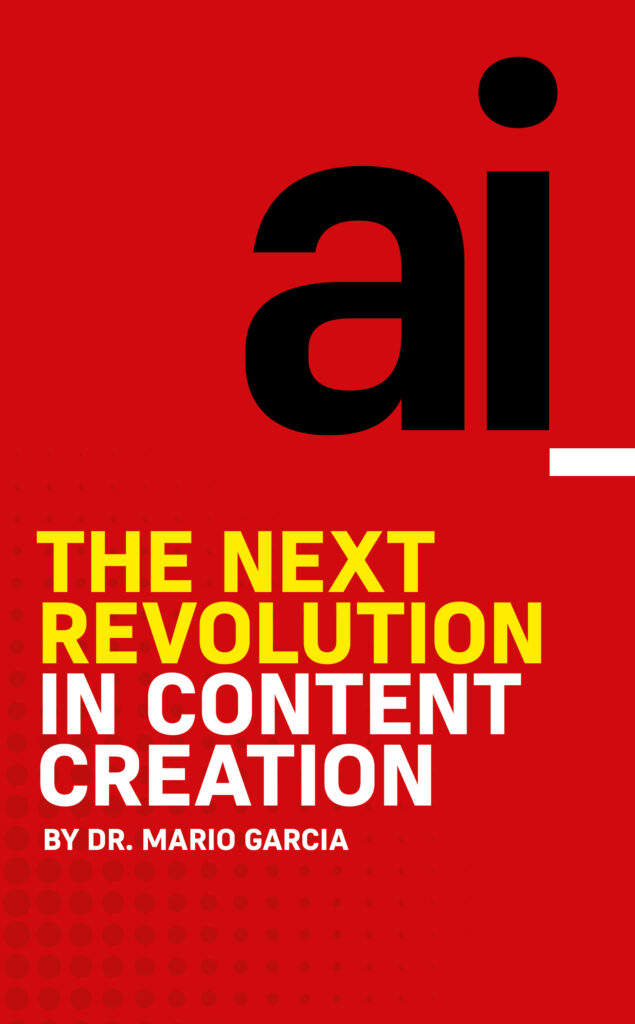
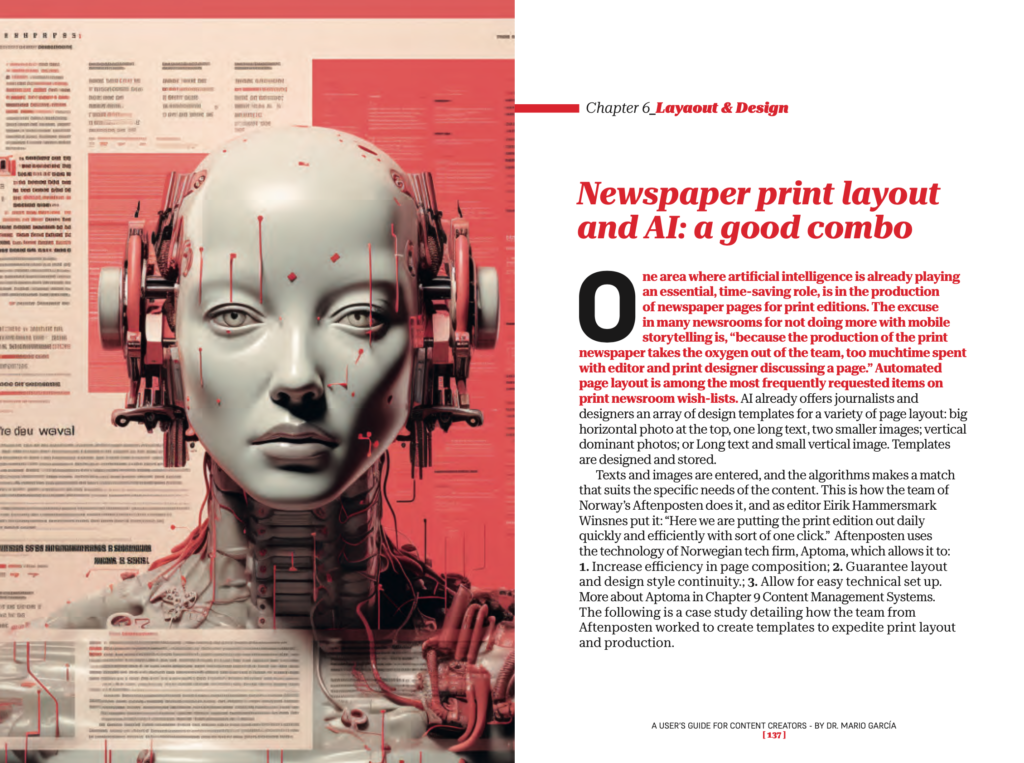

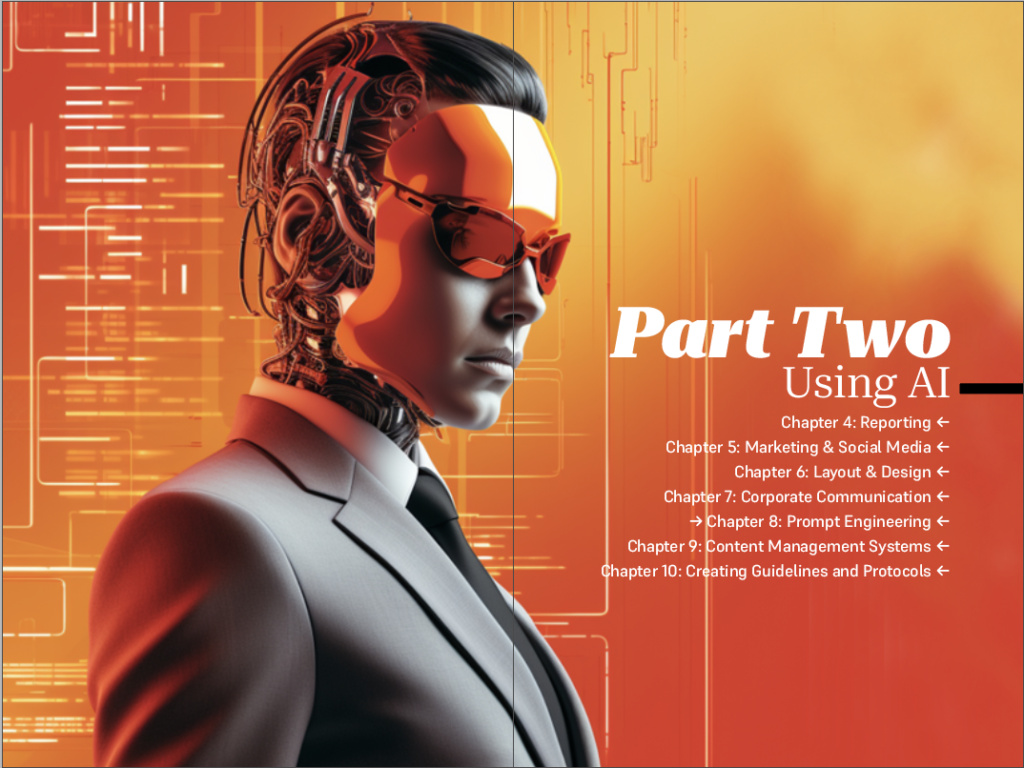
Here is a chance to pre-order my new book about Artificial Intelligence and content creation. The first 25 copies sold will be signed! Order here:
https://thaneandprose.com/…/preorder-ai-what-to-expect…
Pre-publication reviews!

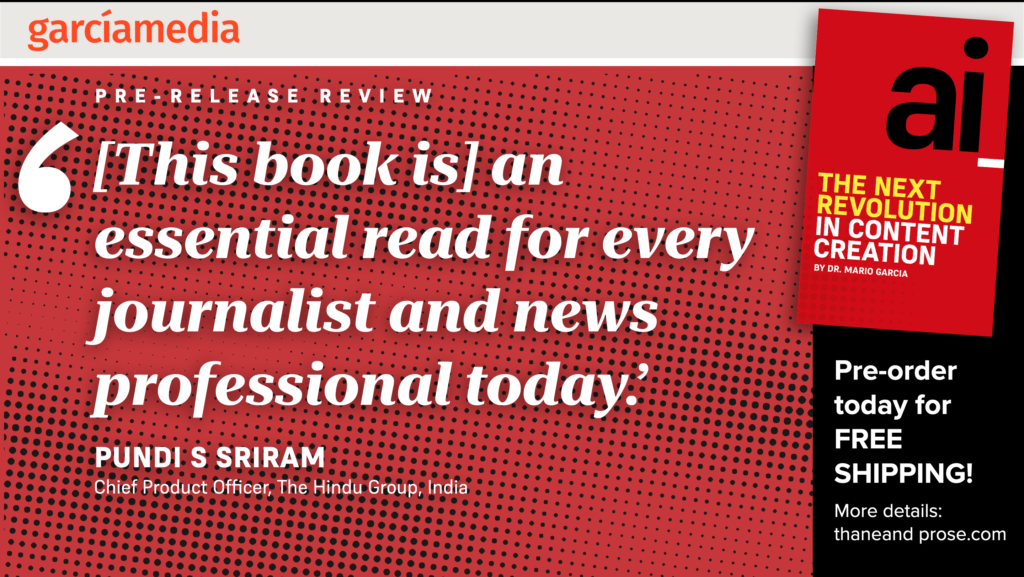
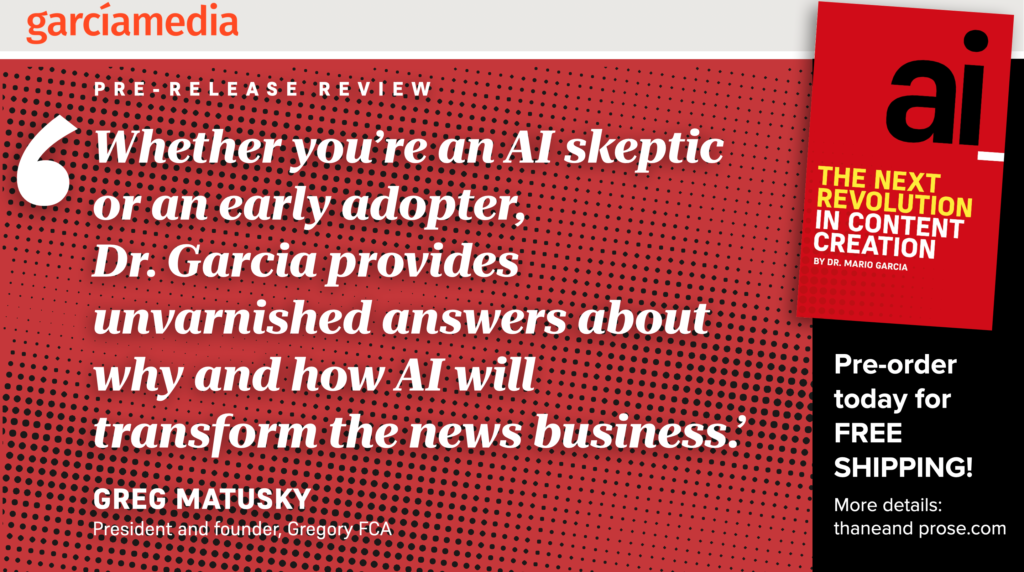
- Write list…

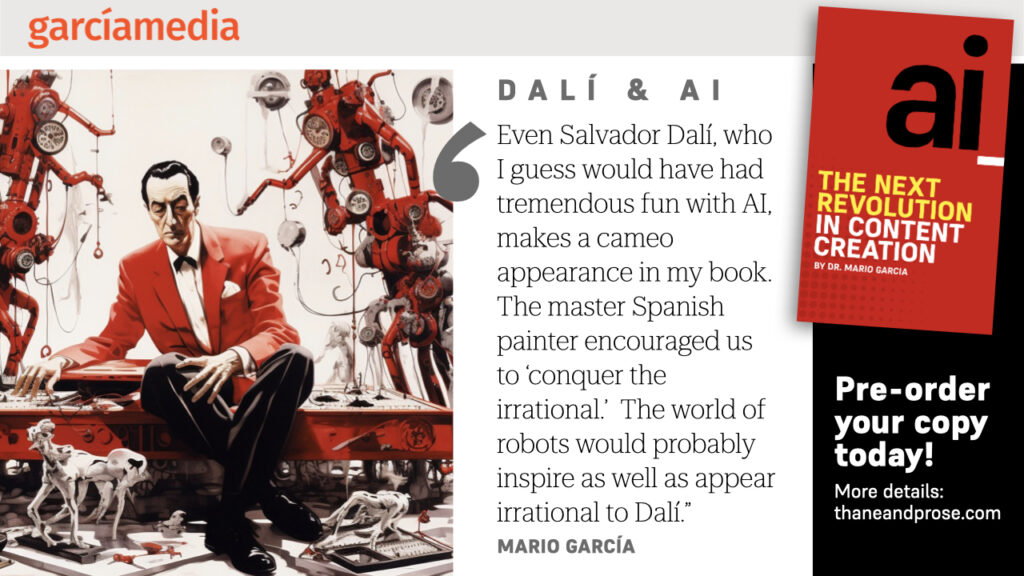
Newsrooms around the planet have gone mobile-first after a Garcia Media workshop!
Our Garcia Media Mobile Storytelling workshops are proven to introduce your editorial team to the way we write, edit and design for mobile platforms. It is a one-day program that involves a presentation (where I summarize my Columbia University class content), and follow it with a hands on workshop.
Did you read The Story yet?
I urge you to consult my latest book, The Story, a trilogy full of tips and explanations about mobile storytelling, which represents the latest genre for journalists to explore. See information below:
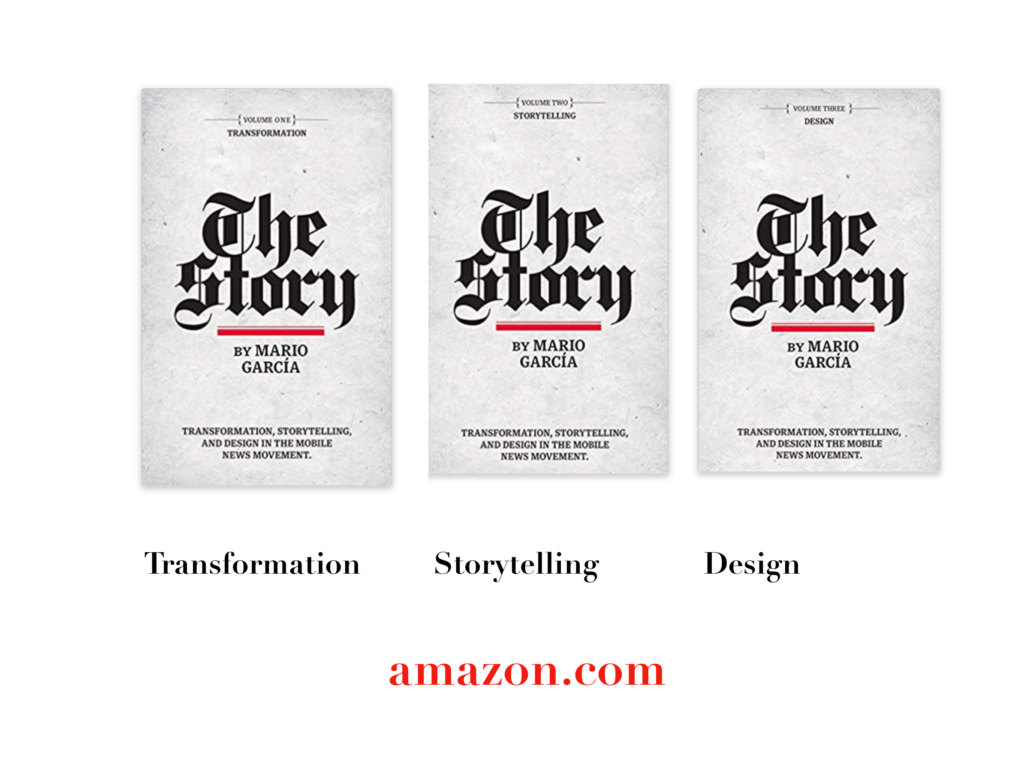
The full trilogy of The Story now available–3 books to guide you through a mobile first strategy. Whether you’re a reporter, editor, designer, publisher, corporate communicator, The Story is for you! https://amazon
Volume 1: Transformation
https://books.apple.com/us/book/the-story-volume-i/id1480169411
Volume Two: Storytelling
https://books.apple.com/us/book/the-story-volume-ii/id1484581220
Volume Three: Design
https://books.apple.com/us/book/the-story-volume-iii/id1497049918
Order the print edition of The Story, from Amazon, here:
TheMarioBlog post #3389